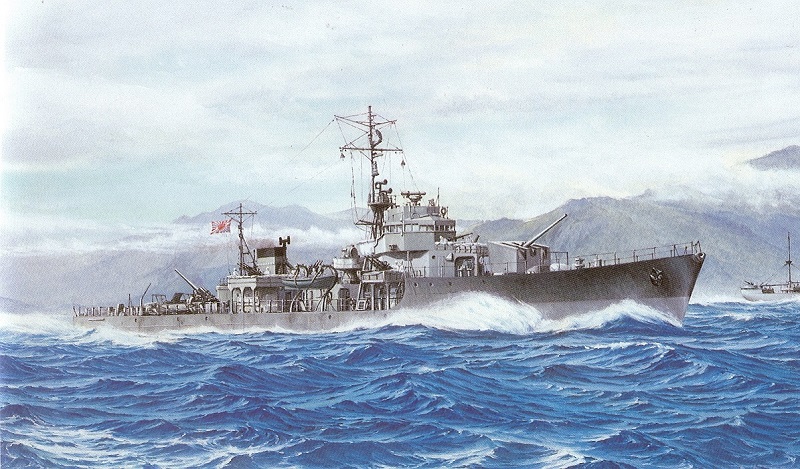© 2009 Bob Hackett and Peter Cundall
1944:
Tokyo. Laid down at Ishikawajima Ship Building, Ltd.
3 March 1945:
Launched and numbered CD-116.
18 April 1945:
At 0800 departs Moji and at 1100 arrives at Yuya Wan.
20 April 1945:
At 1600 arrives at Maizuru.
15 August 1945:
Japan accepts the Allies “Potsdam Declaration” (of unconditional surrender) and hostilities cease.
1 October 1945:
Departs Yokohama on her first repatriation voyage. [1]
7 October 1945:
Arrives at Yap. Embarks troops and passengers to be repatriated.
9 October 1945:
Departs Yap.
10 October 1945:
Arrives at Guam. Embarks troops and passengers to be repatriated.
12 October 1945:
Departs Guam.
18 October 1945:
Arrives at Yokosuka. Disembarks troops and passengers.
28 November 1945:
Completed for the Allied Repatriation Service. [2]
13 December 1945:
Enters Ishikawajima dockyard for repairs.
7 February 1946:
Repairs are completed.
18 February 1946:
Enters "Mikami" (or Sanshin) dockyard for repairs.
6 March 1946:
Repairs are completed.
25 March 1946:
Off Makurazaki, Kyushu. CD-116 runs aground and is wrecked at 31-16N, 130-18E.
1946:
Salvaged and scrapped.
Authors' Note:
[1] Questions may arise about the fact that CD-116 made her first repatriation voyage BEFORE she was officially
"completed". The dates and facts have been double-checked and verified. Therefore, our speculation is that the need for repatriation bottoms was very great and the incompleted fitting out items were judged not to affect CD-116's seaworthiness, so she was pressed into immediate service and "completed" after returning from her first and only repatriation voyage.
[2] Allied occupation forces were responsible for the return of six million Japanese military personnel and civilians from Japan's defunct far-flung Empire. In addition, there were over a million Korean and about 40,000
Chinese prisoners and conscript laborers and approximately 7,000 Formosans and
15,000 Ryukyu Islanders to be repatriated.
Some Allied and many former IJN warships, from aircraft carriers to
kaibokan, were used to facilitate the enormous repatriation effort. Japanese
vessels and crews were used to the fullest extent possible to conserve Allied
manpower and accelerate demobilization. Each ex-IJN ship first had to be
demilitarized; guns removed or, in the case of large warships, barrels severed,
ammunition landed, and radar and catapults removed, if fitted. Repatriation of
the Chinese on Japanese ships began early in October from Hakata, but U.S. guard
detachments had to be placed on many ships to prevent disorder because the
Japanese crews could not control the returnees.
Japanese-run repatriation centers were established at Kagoshima, Hario
near Sasebo, and Hakata near Fukuoka. Other reception centers were established
and operated at Maizuru, Shimonoseki, Sasebo, Senzaki, Kure, Uraga, Yokohama,
Moji and Hakodate. Allied line and medical personnel supervised the centers.
Incoming Japanese were sprayed with DDT, examined and inoculated for typhus and
smallpox, provided with food, and transported to his final destination in Japan.
Thanks for assistance goes Mr. Iwasaki Yutaka of Japan.
-Bob Hackett and Peter Cundall
Back to
Escort Page



